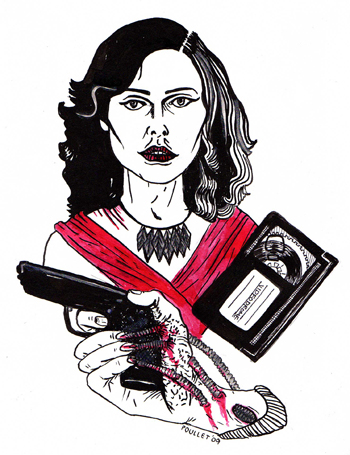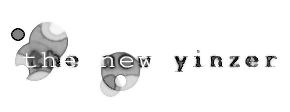Transmission From the Steel City: Cronenberg’s Videodrome and Pittsburgh
Ben Ostroff
Whenever I see or hear Pittsburgh referenced in a movie it makes me smile. It seems like a rare occurrence, because Hollywood has more important places to film and talk about than the Steel City, but Pittsburgh shows up more often in film than one would imagine, and not just in George Romero’s …of the Dead movies. The Pittsburgh Pirates needed help to win the pennant in the original Angels in the Outfield (1951), Bruce Willis cruised the three rivers (and later apologized for it) in Striking Distance (1993), and most recently Kevin Smith featured Pittsburgh in Zach & Miri Make a Porno (2008). What I really enjoy are the smaller moments, when Pittsburgh is briefly mentioned in passing— like when Henry Hill mentions his “connect” in Pittsburgh in Goodfellas (1990). It is one of these small moments that shows up in David Cronenberg’s Videodrome (1983).
Videodrome follows Max Renn (played by James Woods), the proprietor of a small television station in Toronto that specializes in showing smut. On his search for more porn to air on his TV station, Max finds a show called Videodrome, a show that simply presents people being electrocuted, whipped, and tortured in a small room. After watching Videodrome, Max begins to hallucinate. These hallucinations lead him on a journey to find out the origins of Videodrome and a quest to destroy it and achieve a new state of mind, called the New Flesh (leading to the most famous line of the movie, “Death to Videodrome! Long live the New Flesh!”). The brief plot description probably makes the movie sound confusing—that’s because it is.

At first the Videodrome broadcast is thought to be coming from Malaysia, making it believable to the viewer that the torturing of naked people can happen in an outside location. But Harlan, Max’s video pirate, soon recalculates and learns that Videodrome is being broadcast from Pittsburgh.
Before Max discovers Videodrome, he looks at two other pornos to possibly air on his television station. The first, Samurai Dreams, shows a young Asian woman pull back the sheath of a figurine to reveal a dildo, which she then uses to pleasure herself with. Max calls this flick too soft. The other porno he looks at, Apollo and Dionysius, shows a plethora of naked Greek women pleasuring themselves through the act of eating and drinking. When Max watches this he says that it is “too naïve.” Max tells his potential clients he is looking for something that will “break though, something tough.” By implying that these two pornos are produced outside of North America, they are making the porn exotic, and too soft. Therefore, Videodrome needs to come from within the North American borders—this is where Pittsburgh comes into play.
Why choose Pittsburgh as the place of production for a torture-porno that is way too realistic for the comfort of most people to watch? To answer that question one needs to turn to a quotation from Brian O’Blivion, the film’s Marshall McLuhan-esque media prophet, who only appears on a television screen. During an interview, O’Blivion states that “the television screen has become the retina of the mind’s eye.” Cronenberg uses the audience’s perception of Pittsburgh to make it believable that these heinous acts could be completed in such a worn down industrial city. When Videodrome was released Pittsburgh wasn’t experiencing its Renaissance quite yet, and The New York Times hadn’t started its love affair with the Steel City.
The “worn down” look is seen in Videodrome’s simple mise-en-scene. The person being tortured is thrown into a room with a clay wall, with nothing else. This is compared to the crowded mise-en-scene of the other porn viewed in the film, porn filled with unnecessary exotic objects. The difference between the exotic porn and Videodrome is also evident through the technical aspects of the different pornos. Where Samurai Dreams and Apollo and Dionysius are smoothly edited with a soundtrack playing over the video, Videodrome is shot with a single camera, and the only sounds playing from the broadcast are the whips of torture and screams of pain. Once again, Pittsburgh’s torture- porn is seen as simple, a product that can believably come from a city which is viewed as down and out. When Max first views Videodrome he calls it “incredibly realistic,” and when he learns that it originates from Pittsburgh, it makes it even more realistic to him, a product of a city that expresses its pain from losing many of its jobs by producing porn that realistically tortures people.
Unfortunately, Pittsburgh is cast as a sort of hell-like place in Videodrome. As a character in the movie, Pittsburgh is a city where anything horrible can happen. And the audience believes it due to the negative stereotypes of the city the media propogates. Pittsburgh is such a horrible place in Videodrome, that when Max kills Harlan, he tells him, “See you in Pittsburgh!” instead of, “See you in hell.” Luckily Brian O’Blivion isn’t always right, and our reality isn’t always in television. I will gladly meet Max Renn and company in Pittsburgh.
Ben Ostroff immigrated to Pittsburgh about five years ago. He can be found wandering the streets of the East End wearing Montreal Canadiens paraphernalia.
![]()
